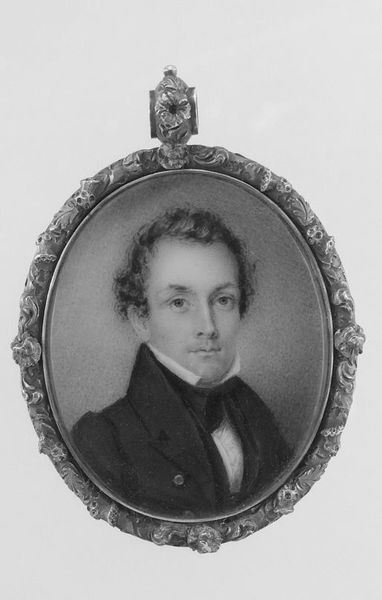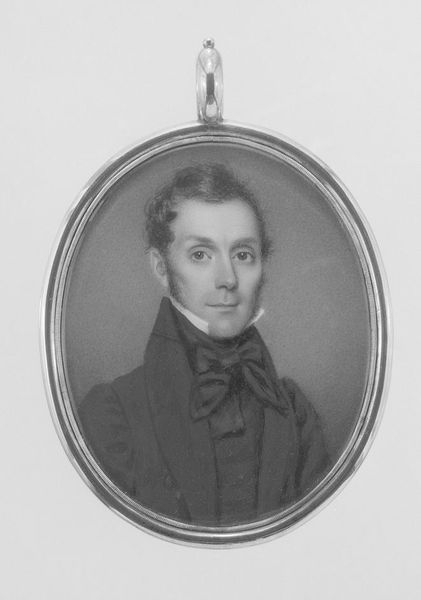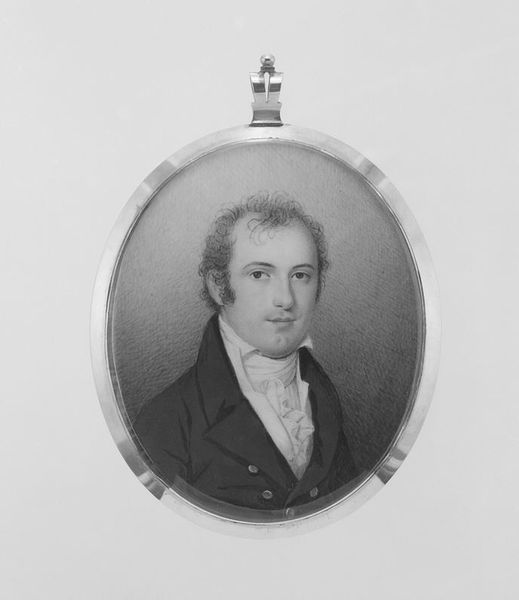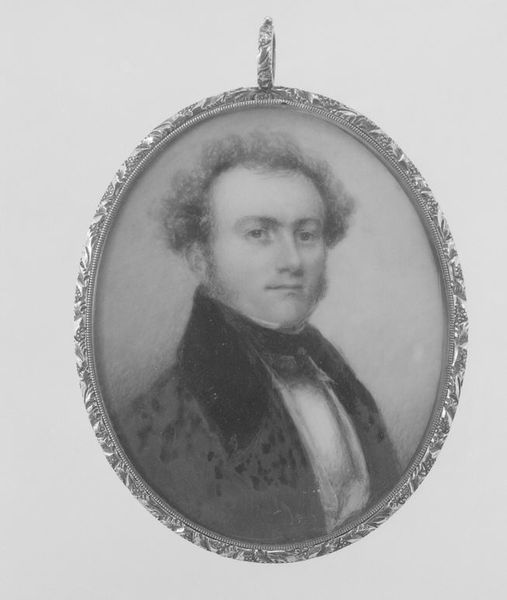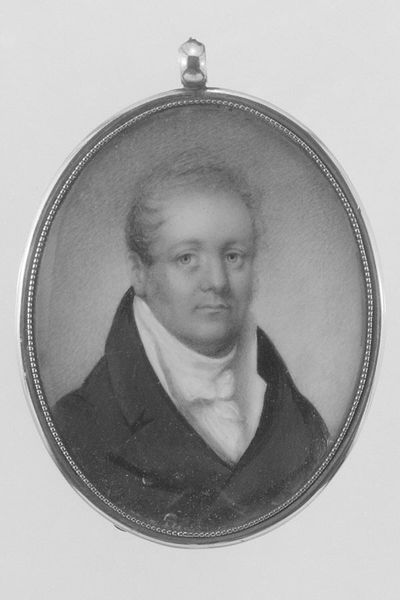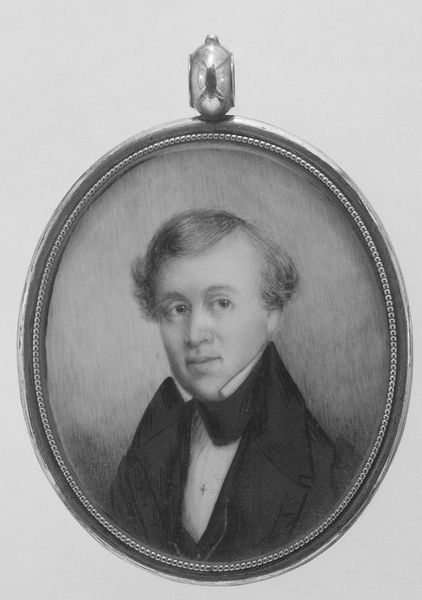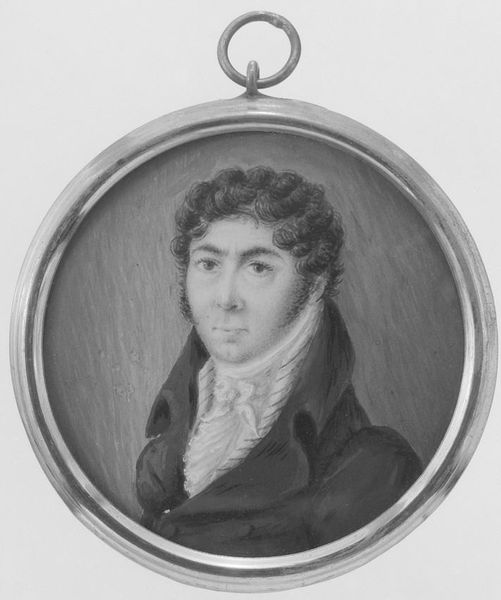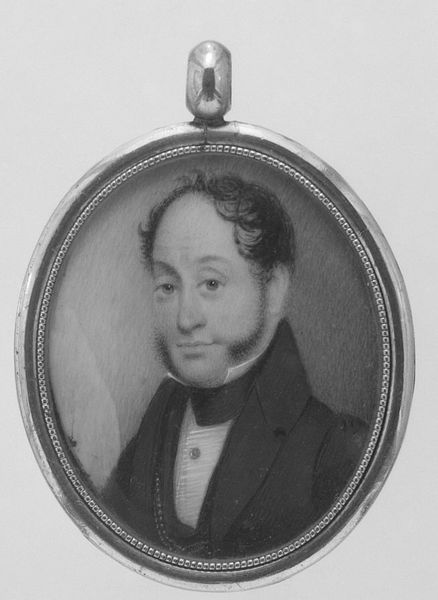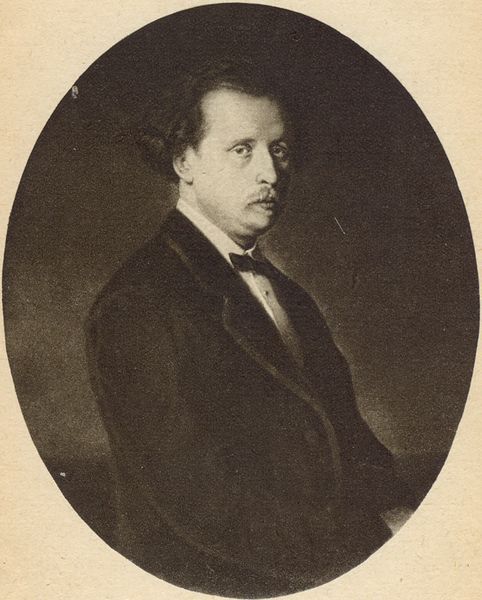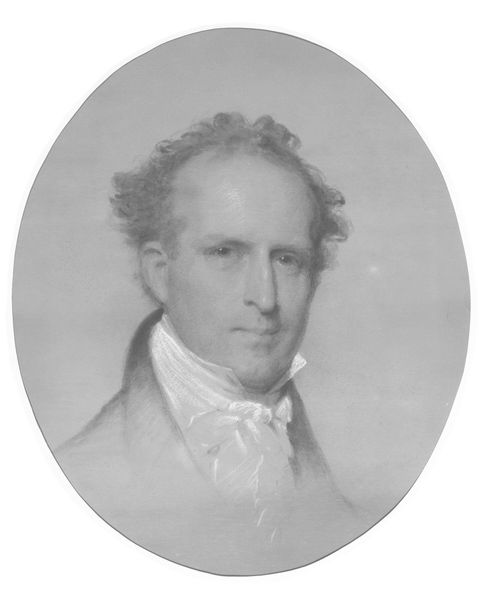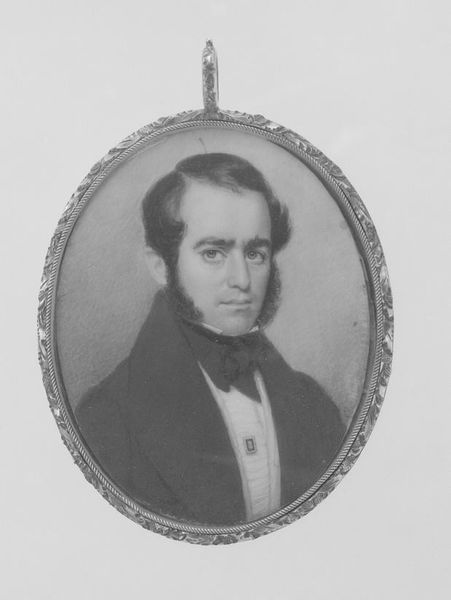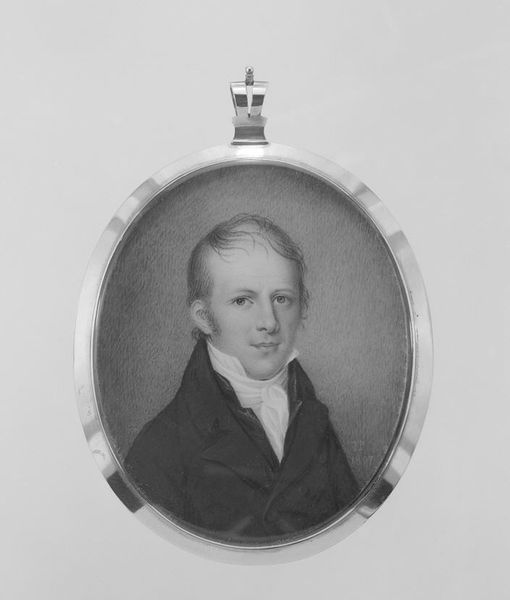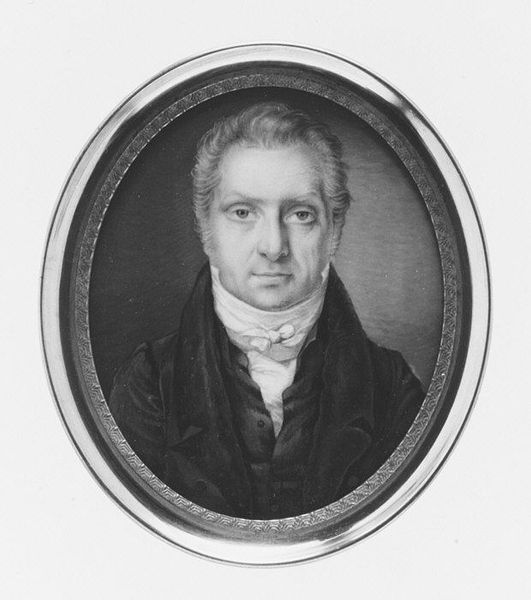
painting
#
portrait
#
neoclacissism
#
painting
#
black and white
#
academic-art
#
miniature
Dimensions: Oval, 2 1/4 x 1 7/8 in. (59 x 49 mm)
Copyright: Public Domain
Curator: Immediately, I'm struck by the air of almost ghostly quiet about it. The tones are so muted, it’s like looking at a memory trying to hold onto itself. Editor: We’re looking at "Portrait of a Man," likely made between 1805 and 1815. Currently housed at The Met, this painting remains credited to an anonymous artist, though clearly someone who understood the emerging Neoclassical aesthetic and academic precision. Curator: Anonymous, huh? Makes you wonder about the sitter too, doesn’t it? Was he someone important who just didn’t want to be named? Or someone… deliberately forgotten? The oval format lends an air of intimacy, almost like a locket containing a secret. Editor: The locket likeness is very apt! Miniature portraits were intensely personal objects, little emblems of affection or status. Oval shapes in portraiture often symbolize eternity and the cyclical nature of life—very potent concepts! And this somber grayscale really accentuates the sense of gravity. Look at the exacting brushwork that articulates his posture. The severe costume and hairstyle mark him within the period’s embrace of clarity, order, and what they conceived as 'virtue.' Curator: 'Virtue' feels heavy when I see it like this. It’s almost theatrical. You have this severe, dark suit with its perfectly formed collar surrounding his face as if in defense… and then this gaze. I can't read that gaze; it is inscrutable. Is he thoughtful? Is he anxious? Both? It makes you ask who determines someone’s virtue, who defines them for the ages? Editor: It's easy to view that expression as either stoic nobility or suppressed tension, depending on your own mindset! In terms of symbols, the somber tone carries considerable cultural weight. While we now associate color photography with realism, in earlier centuries, tonal works often had ties to memorializing and veneration. So, this lack of vibrant hues subtly transforms the subject, turning him almost into an idealized figure of memory. Curator: Memory as something more fragile than stone, maybe. Because even looking so precise and carefully observed, he is almost fading even as we gaze at him now. Editor: It all serves as a reminder about time's effect not only on ourselves, but also the mutable nature of representation. The dialogue between presence and absence captured here continues to fascinate me.
Comments
No comments
Be the first to comment and join the conversation on the ultimate creative platform.
